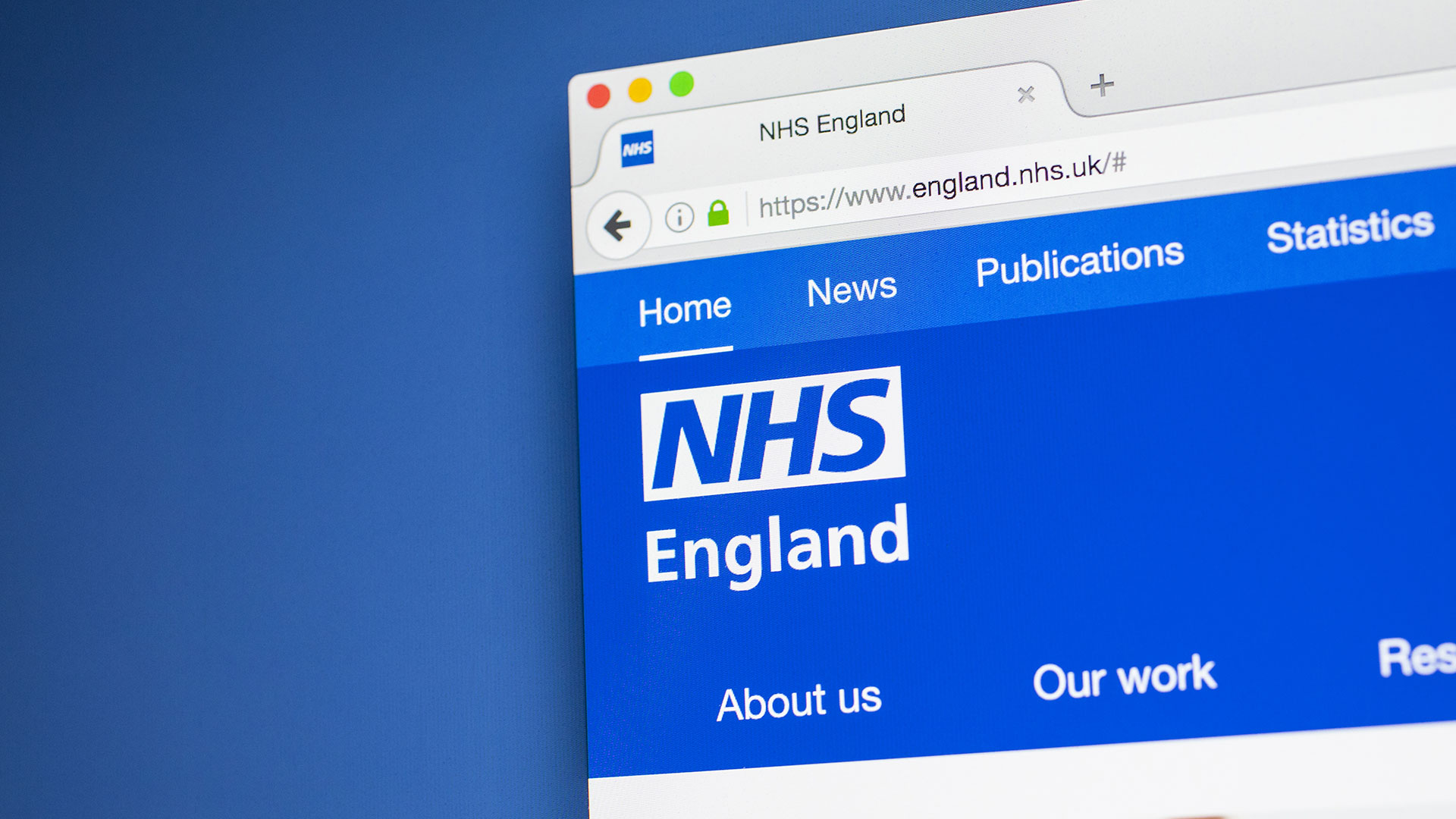What’s next for the NHS brand?

It’s been 75 years since the NHS’ inception.
25 years ago, The Team created a logo to celebrate the 50-year anniversary of the NHS, which in turn led to further work supporting its communications. .
Today, in 2023, we’re asking ourselves: how can the NHS improve its relationship with its consumer base and employees?
For most of us, when we think of the NHS we summon an image of the logo, the font, the colour, or other areas of communication touchpoints from the NHS.
This is immediate recalling of key features of the brand highlights how deeply ingrained the brand identity is within the social consciousness. This unified brand, encourages trust of the NHS. It feels reliable.
Whether it’s positive or negative or somewhere in between, in the UK, most of us have a personal experience with the NHS.
At some point, it’s likely we’ve fallen into its weary arms expecting – and relying on – the free healthcare we’ve had available to us for the past 75 years.
The NHS has been the constant pulse throughout political, social and cultural change and upheaval.
In its time, it has supported a post-war Britain, a global pandemic, a motley crew of prime ministers and ever-changing political parties. It has witnessed mullets and perms, low rise jeans, shutter-shades, neon, and Crazy Frog. It’s been through a lot.

The NHS brand promises stability and trust, but somewhere along the line we’ve misunderstood that promise.
It’s no secret that the NHS is under immense pressure.
• Junior doctors have just finished the longest strike in NHS history, fighting for better, fairer pay
• Waiting times can be long and many believe the NHS is underfunded and unable to meet the demands of its patients.
• It is woefully understaffed. The Guardian reports that there are ‘more than 133,000 vacancies in the health service’.
Some argue that the NHS is under such strain because the general public misuse its service; taking up NHS time with unnecessary appointments. Wherever you sit on the rickety fence of the NHS-is-under-too-much-pressure debate, the fact remains that it is under unsustainable strain.
So, if we were to be posed with the same task today, how would we do it?
An NHS brand refresh, not a rebrand.
The current social landscape of 2023 looks very different to that of the 1990s and early 2000s.
Things that were once taboo – like mental and sexual health, are now freely and openly discussed and supported. This means there are many more things to consider when approaching a brand refresh than there might have been a decade or two ago.
We’d take an inside/outside approach, looking at all stakeholders, from the public to the employees.
We’d ask them: how can we build trust in all these areas, but also protect the NHS from being inundated with unnecessary requests?
Underpinning our strategy would be behavioural psychology, employee engagement and user accessibility.
So, what’s the backstory?
In the 80s, the NHS were operating with a mishmash of materials, posters, leaflets etc, that didn’t represent the NHS. Instead, it represented individual factions of it.
A hospital in Nottingham, for example, would have completely different leaflets to one in Norwich.
The Department of Health wanted to change this and make the NHS’ voice clear.
In 1997, the government released a white paper, ‘The New NHS: Modern and Dependable’, which stressed the importance of a unified NHS. But for the NHS to be seen as dependable, they needed to reshape their brand.
The Department of Health began by tackling the communications with both the public and the staff.
In 1998, The Team designed a logo in celebration of the 50th anniversary of the NHS, which was used throughout the UK, helping to create one singular brand identity. This gave the Department of Health and the NHS confidence to put time and resources into the development and implementation of a unified brand, which The Team consulted on.
What would we do with the same brief in 2023?
The NHS brand is firmly ingrained in people’s hearts and minds. With this in mind, we’d ensure the brand could communicate with an ever-shifting environment by embracing diversity, inclusivity and transparency.
There are four key elements to consider:
• The purpose of a brand
• Employee engagement with a brand
• The brand’s relationship with the public
• The accessibility of the brand
The purpose of the brand

The NHS provides free healthcare across the UK: it’s important to highlight that the service is free, but not to be misused.
So we need to build up trust with all parties involved to ensure we can deliver this message.
The NHS’ values are as follows:
• Working together for patients: patients come first in everything we do.
• Respect and dignity: we value every person – whether patient, their families or carers, or staff – as an individual, respect their aspirations and commitments in life, and seek to understand their priorities, needs, abilities and limits.
• Commitment to quality of care: we earn the trust placed in us by insisting on quality and striving to get the basics of quality of care – safety, effectiveness and patient experience right every time.
• Compassion: we ensure that compassion is central to the care we provide and respond with humanity and kindness to each person’s pain, distress, anxiety or need.
• Improving lives: we strive to improve health and wellbeing and people’s experiences of the NHS.
• Everyone counts: we maximise our resources for the benefit of the whole community, and make sure nobody is excluded, discriminated against or left behind.
We’d take these values and see how they were being implemented, looking for indicators that the public – and the employees – felt that the values reflected the brand.
The NHS needs to speak to all audiences from all walks of life, in all areas of the UK. This means that a degree of flexibility within communications to the public is vital.
Different types of communication will work for different people, something that would need to be accounted for in order to effectively underpin the brand purpose of creating trust.
Employee engagement with a brand
The NHS depends on and trusts its employees. Those same employees need to trust the NHS brand.
Jen Robinson, Employee Engagement Consultant here at The Team, has given insight into the approach we’d take to refresh the NHS brand from the inside…
One way of achieving this is employee ownership and accountability of the brand.
Co-creation (or co-refreshing) would be a strong appoach. The employees who are frontline and know the ins and outs of the NHS are best positioned to know how the brand works for them, how it can work harder, and, crucially, how it needs to work differently.
It’s key to understand the full employee lifecycle of what is a wonderfully diverse mix.
Employees are fiercely proud of their respective professions and expertise under the NHS umbrella, and rightly so. By taking time to understand the opportunities and pain points of the brand in their worlds is vital.
Pride in a brand needs to work for the employees, woven seamlessly into their everyday and most definitely not a meaningless corporate add-on.
The NHS brand is a constant for workers. Jen remembers it well from the amazing time she spent working for them – perhaps more so than for any other employees representing a brand.
The nature of the roles (literally life and death), the pride and the national emotion for the institution that is NHS, means that those who have worked for the there forever feel part of it, even after leaving.

The brand’s relationship with the public
In a time of serious unrest, it’s more important than ever to remind the public of what the NHS stands for.
With society in turmoil after the pandemic, ongoing political instability, cost of living crisis, climate emergency and media mayhem, it’s unsurprising that people are turning to the NHS for support when they may not necessarily truly need it.
The NHS is always there for us, unwavering in its care of people despite the continuous struggles it faces. There’s great comfort in that for a lot of people.
The public need to be able to put that trust back into the NHS.
So we’d ask the question: what does the NHS aspire to be?
From this we could work on ways to communicate this to the public.
The accessibility of the brand
There are several elements to how we would approach this at The Team:
• Accessibility of the brand from an employee perspective
Building on the idea of employee ownership (where employees become guardians of the brand), means employees know how the brand works best for them and their audiences (whether that be internal and external stakeholders).
From a practical perspective, the NHS workforce is mostly a remote one – plugging into the corporate machine of intranet and emails is not a priority when patients are number one.
This leads the subject of accessibility further into the realms of how the brand is shared and co-created across a diverse mix of channels to make sure that all employees have equal opportunity to use the brand.
• Digital, motion, screen-based interaction
One way to do this would be investing in the NHS’ digital output by creating a seamless digital interface for remote employees to engage with across the UK.
We’d take a similar approach with the public, creating a digital output that speaks to the diversity of users, creating a level of trust that in turn re-instates the NHS’ importance.
Online or over the phone appointments and consultations are on the rise, so we’d look at the user accessibility of this. If the NHS is under stress and pressure, developing this as an option for all surgeries could be very beneficial.
Key-take aways
If we were to do this all over again for the NHS, or for any other brand, we’d look at the context, the history, the brand’s relationship with its employees and its consumer base (public).
We’d consider how each strand views one another, and how the brand can work towards its aspirations with a holistic approach.
Oftentimes this process is nuanced, and with a brand as sensitive as the NHS, a behavioural, accessibility and employee engagement focussed approach would be key in achieving best results for a brand refresh.
Does your brand need a refresh?




